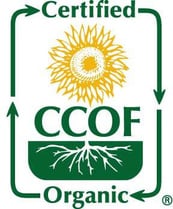Winter is over!
1.31.2024
Rice farming has some pretty great milestones through the year. First planted field, first head found in a field, last day of harvest; these great days make their mark on the year. But what signals the beginning of a new season? Draining the fields from their winters sleep!
In anticipation of tilling fields for spring, the ground needs enough time to drain and dry before it can be worked. The fields that were not planted with winter cover have been flooded all winter to facilitate the decomposition of the straw from last years crop and to set the table for all our waterfowl friends looking for a meal of rice and weed seeds.
Let the farming begin!

Water buffalo
11.10.2023
Does farming progress always incorporate the newest technology? While a majority of the time we would say yes, often times in organic farming we find progress in connecting natural systems and cycles. This is a project that I hope will increase efficiency and decrease cost on the farm.
1
Funny Lines
10.5.2023
This is a photo of data collected by the yield monitoring system of a rice harvester during harvest. Dark green represents the best yielding areas of the field, in this case averaging around 11,000 lbs/acre, red the worst 2,000 lbs/acre or less. I find this data intriguing as it holds so much information as well as answers about a field. One obvious thing I see about this field is where the water enters the field. You will see the large red area on the top right side that moves towards the bottom(#1). This being the intake of the field hosts colder water temperatures throughout the growing season which results in rice being stunted in its growth and development. There are other things to see in this data as well.
Something else that catches my attention is the large orange section in the middle (#2). Because this area is so large and follows closely the boundaries of two checks, it makes me believe that the irrigator is to blame. Water might have been held too deep, too long, or didn't get water soon enough after dry up and resulted in a yield loss. Yes, I irrigated this field so there is room for me to improve next year.
The red spot closer to the bottom in the middle (#3) catches my attention as well. It follows a levy boundary on the top but then fans out on the bottom. While this could be a number of things, my first thought is an area out of level. Perhaps this is a low area that allowed blueflower to flourish or a high area that allowed watergrass to thrive. This is an area that I will be paying special attention to come spring when I level this field.
There is much more hidden in this data that will unlock higher yields, what do you see?

1
2
3



